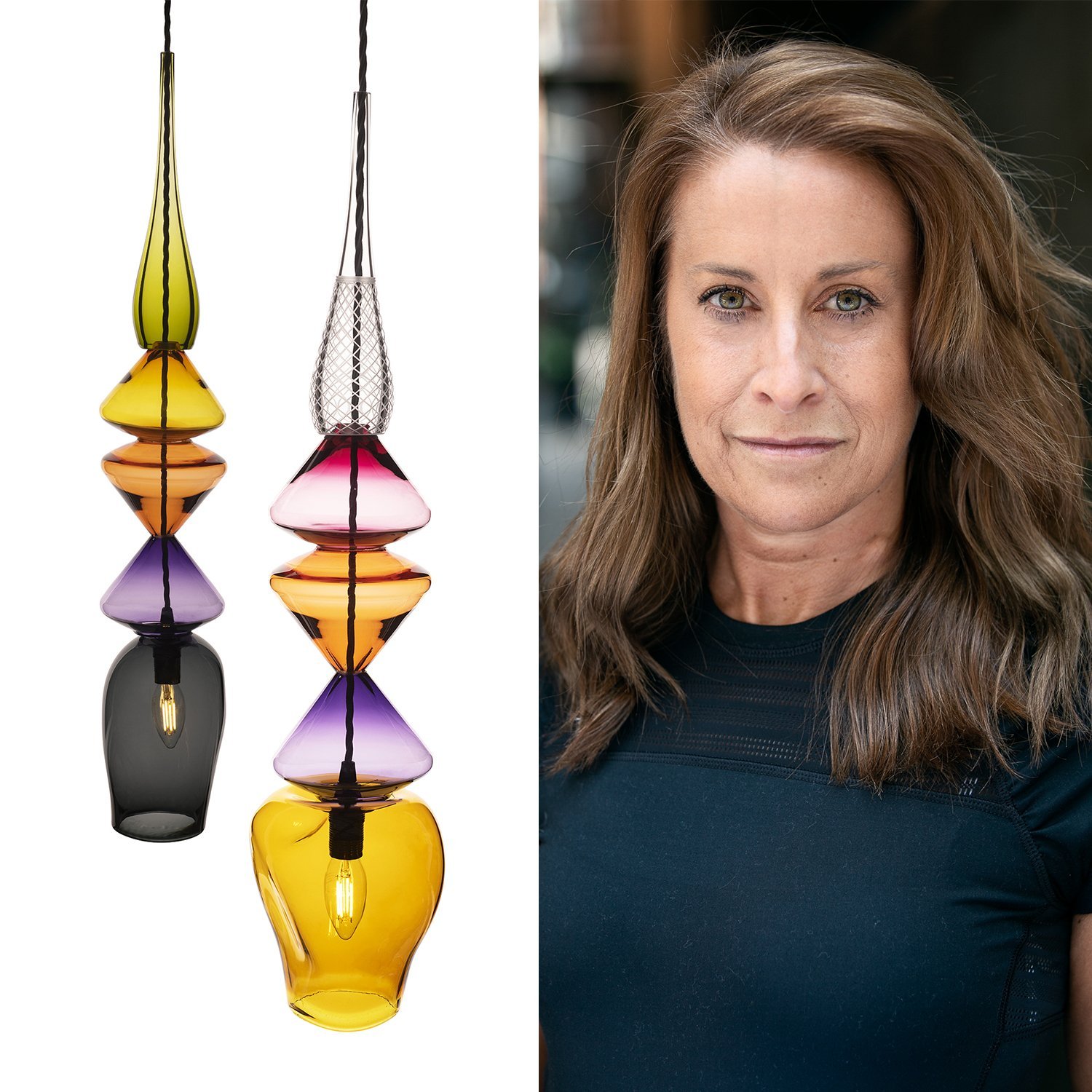
Blown Away: The Artisanal Lighting Design of Nicola Schellander
Devon based glass artist Nicola Schellander brings to the luxury interior design market a truly unique approach to lighting design. Hints of Art Nouveau and Art Deco inspiration meld with a contemporary experimentalism to deliver collections of lighting and chandeliers that simply ooze opulence and refinement.
Riluxa spent some time talking to the multiple-award-winning designer about her inspirations, her work and her growth ambitions.
Your passion for glass began as a teenager, is that right? Do you remember that first feeling of being moved by the artistry? Tell us about your early experiences with the material.
I’d always enjoyed experimenting with different materials when I was younger. I used to spend time with my father- he was always extremely creative, and good at making things. But as a Doctor, he was also grounded in science and technique! So from a young age I would sit and design and make things with him, especially in wood. But even though I had been fascinated with glass, it was one material I had never worked with.
Then when I was older, I visited a glass exhibition in London. I was blown away by the endless possibilities with glass. Until that day I hadn’t realised how versatile it was. You can do anything to it – cast it, drill it, saw it, cut into it, colour it, render it transparent, render it cloudy, you can melt it. It is a fluid, so it’s mentally challenging to work with but is also beautiful to work with, but I hadn’t realised any of this until that exhibition.
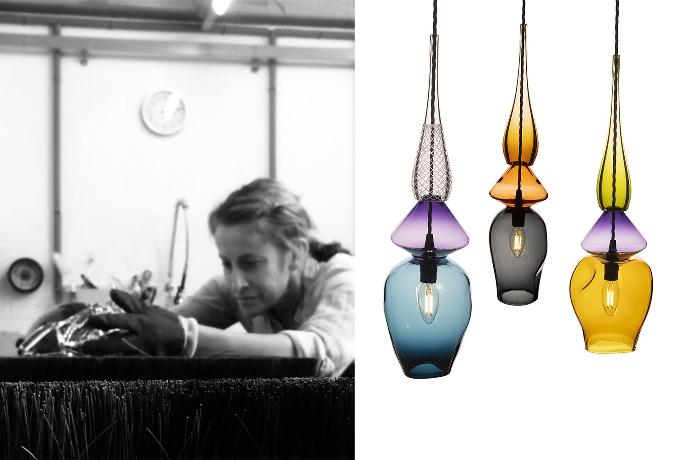
You studied 3D Design in Wolverhampton, completed an MA in Art & Design and, before you knew it, you were Head of Design at Edinburgh Crystal. To what extent do you put the speed and fluidity of your ascent to the top of your craft to your singlemindedness? Is it important to be obsessive about one’s passion to make a career of it?
It certainly helps! Although one can take a balanced view of course. But yes, a strong passion and determination does help your focus. And whether it is through travel or exploration, I have always explored the areas where few have been or few would venture. I love doing what I do and I think the way in which my career has developed over the years has certainly given me not just a rounded perspective of the industry but also a completely unique offering.
The role of a traditional glass blower usually involves staying in the studio to make paperweights and other rounded objects or vessels. But my background lies in crystal, travelling, and exploring working with teams of people, and also with many exciting processes. So to combine the skills and the traditions of the two means that I am able to offer something unique.
One thing I am also passionate about is keeping the skills of the crystal and glass industry alive. Crystal is a centuries-old industry in the UK which has been on the decline for many years, and even more so over the past 10 years. There are manufacturers with some incredible craftsmen that have disappeared and there are skills that are dying and will be lost forever unless we keep them going.
With everything I do I try to push the boundaries, to show that glass and cut crystal still has a story to tell and can be used to produce fresh, contemporary designs.
Why lighting? Are you guided by the market to some extent? Or is it simply to do with the interplay between light and glass and what that allows you to achieve as a designer?
Lighting certainly isn’t my only offering but it is my main area of focus. Previously I’ve been commissioned to produce lighting which matches with other glass features, for example door handles. So door handles, bowls and centrepieces are also featured within my product range.
Here in the UK there has long been a real gap in the market for elegant, hand-made glass lighting. There are one or two really good manufacturers about but in the main we are inundated with cheap, mass-imported products, or lighting that is industrial looking and traditional – maybe not old fashioned as such, but still round, uninspiring and industrial.
Lighting doesn’t have to be this. It has so much scope. More often than not it’s made from glass and as I’ve said, there are no limits to the designs you can create with glass.
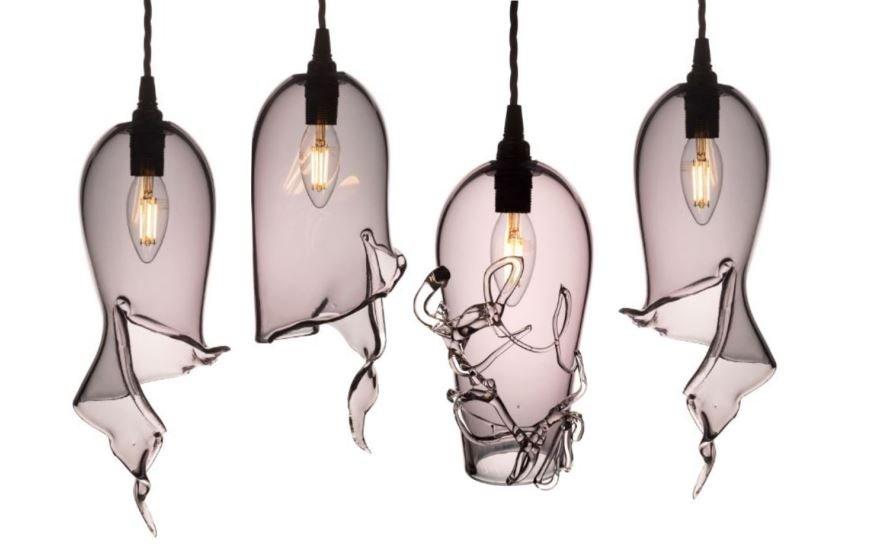
The process of designing blown glass: how experimental is it? To the untrained eye, it appears like a hand-blown piece could quite easily go awry with just the tiniest amount of room for error. Have there been lots of ‘happy accidents’ or do you always have a clear idea of what you want to achieve?
A bit of both! It is a fluid, so it has a mind of its own. Through experimentation, and also working with other craftsmen, you might find that the glass does something unexpected or beautiful. Likewise, if you are working to a brief, or a drawing, then you need to be precise, be able to work to small tolerances and push to perfection.
These days people are starting to realise that forms and shapes can be more organic, and that imperfect shapes can be equally elegant and beautiful. There is beauty in the material and also how it is made.
This is great for me as I enjoy playing with the glass. I’ll mould it and twist it, cut into it using different tools and implements, I’ll reheat it again and again, twisting the form and teasing it out. The end result is a unique design.
If you take a close look around a standard light, it’s round and looks identical from every angle. I like to produce designs where if you turn it slowly round and study it closely, it will give you a different perspective as you move round. These are really exciting designs to work on and give me the opportunity to really embrace my skills and experience, as well as the use of traditional glassmaking tools.
Your work invites comparison to an earlier age of more opulent interior design, recalling the floral decorativeness of Art Nouveau and the vivid colours and sleek curvature of Art Deco. Yet there is significant originality to your designs that belie resemblance. From where do you draw your inspiration?
I have many sources of inspiration. For several years I worked out of crystal factories and from studios and workshops. One of the main advantages of this for me was that I was working alongside some great engineers and craftsmen. I was able to watch them at close hand and it gave me unlimited access to their generosity of skills and experience.
While I have my own skill sets, I love watching other makers in action. I revere skill-sharing. One great way of doing this is to spend time working alongside them. This is something I strive to do whenever I can.
I have also long admired both the Scandinavian and Finnish traditions of glassmaking and artistry. They have wonderful collaborations between the artist and the factory teams. The resulting designs remains timeless, energetic and filled with exploration. I love the way that they combined materials, used materials at every stage of the process of glassmaking and the sheer organic craftsmanship of their tools.
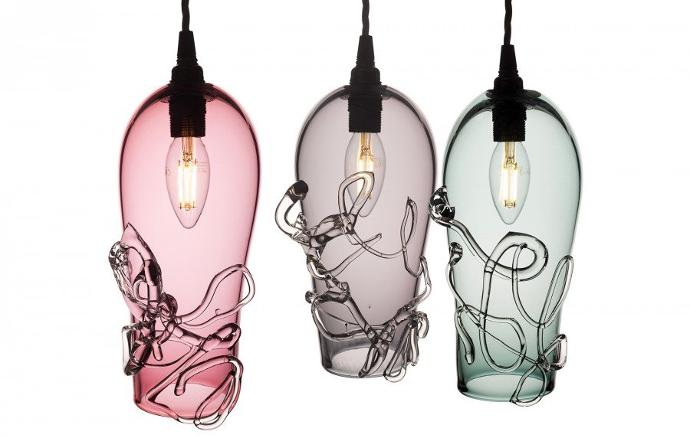
With a growing list of both private and commercial clients, you surely can’t be blowing all the glass yourself. How do you grow an artisanal operation like yours so that you can continue to provide bespoke pieces but on an ever-increasing scale? And how do you maintain the quality?
Indeed. Glassmaking is intrinsically about teamwork. If you watch the process, it is like a dance. Each person has their part to play. I collaborate and work with a small select number of experienced craftsmen, suppliers and studios. It is part of my passion for my work.
From my background and experience, I have had to work with clients that demand high levels of quality. And as each piece is made to order, each piece is worked on numerous times and checked. The team I work with are all meticulous in their attention to detail which is something to be valued and celebrated.
Mass production has been the standard home improvement model since the 1950s. Do you foresee a return to bespoke interior design on the horizon? Why are people choosing not to shop at the likes of Habitat or, even, IKEA and, instead to look to artisans like you?
I think there has been a change in the way people use their homes over the years. Open plan designs mean we have larger spaces in which to place feature lighting whether it be stairwells, hallways or over kitchen islands. The way we use our home has changed too. Take the kitchen for example which in the 1950s was regarded as being functional and simply a place where food was prepared. Today however, the kitchen is often the focal point and its design is as much about functionality as it is lifestyle.
I think the more time people are spending in different areas of the home, the more they are realising it’s worth investing in, and of course where possible they want to set their homes apart. People want to be able to tell a story about where they live. They are increasingly wanting their own personality to shine through.
Bespoke projects do just that. People are becoming more and more adventurous with colour, with combinations of objects and are wanting to share that with their friends. It’s a very exciting time for design.
Bespoke bathroom lighting is also now growing in demand, which up until recently would have been very unusual. It is real speciality as it involves developing a waterproof casing for a lightbulb and needs careful attention to detail. The results can be stunning, however, and can help create a bathroom that feels like a sanctuary or haven.
With my collection, I make a point of creating designs which customers are able to fully personalise. So for example with a pendant light they can choose to have two, three, four or eight, they can hang them in clusters or in different combinations, they can choose their own colours. I have a range of 18 colours but if they have a bespoke colour in mind, I will also do my best to match it.
All this allows them to buy my products but also add their own personal stamp to them, rather than buying products off the shelf which are the same products that everyone else is buying. My designs and lighting need to mirror the client’s personality and their environment. The lighting needs to essentially bring them joy.
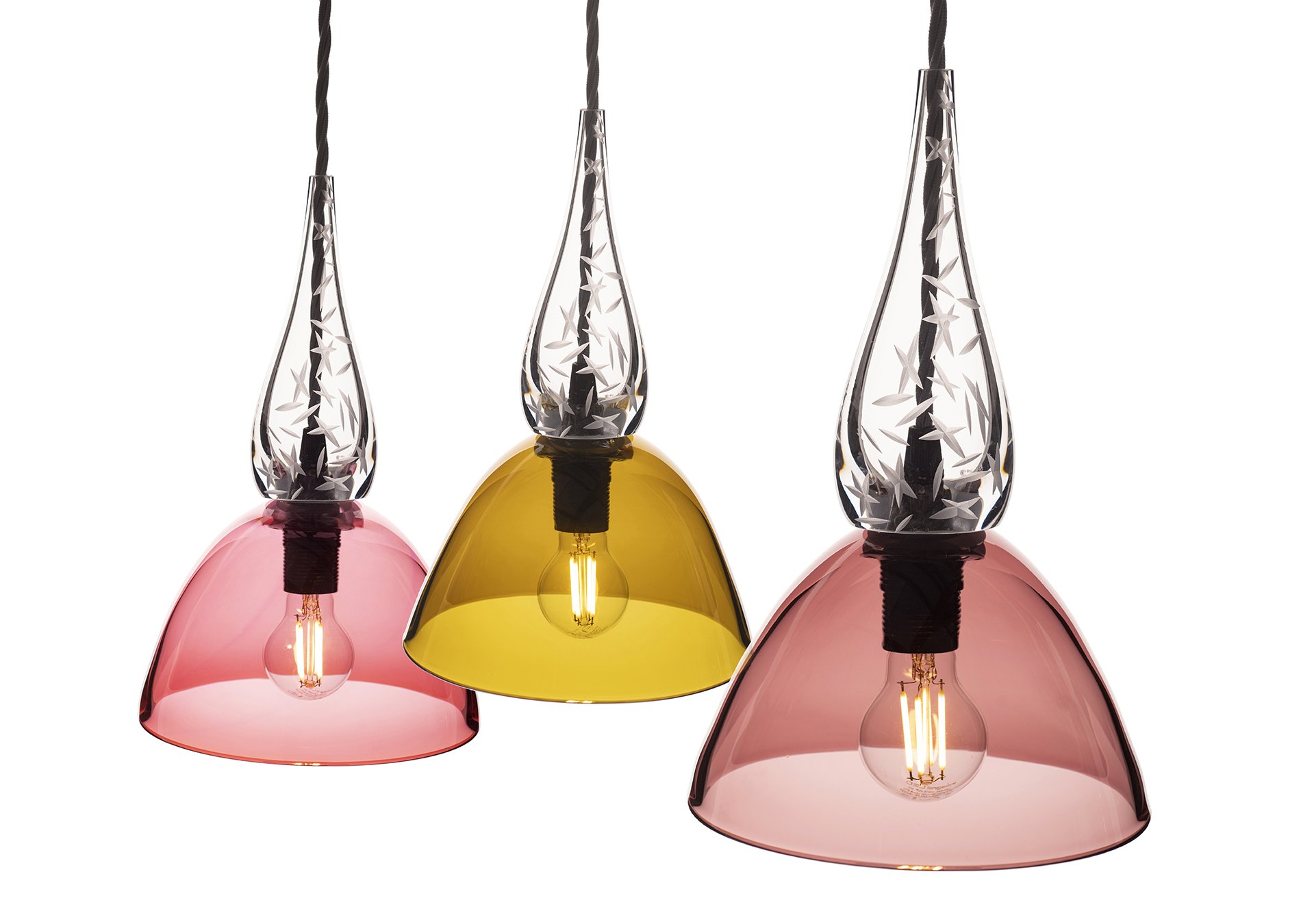
Finally, and on a similar tack, we live in what you might call a post-design-movement world, contemporary design often replicating popular styles, rather than breaking new ground. You, however, operate in something of a league of your own. How important is legacy to you? Do you want to go down in history as one of the early 21st Century’s great designers?
It would certainly be nice! I like to think that what I do is a little bit different from everyone else. But I think the real legacy would be inspiring designers and glassmakers to push boundaries of the material and keep such precious skills alive.
I think my experience in both glass and crystal is unique. There aren’t many designers or makers that are keen to offer both. Or combine both.
Also, as well as working on my own designs for interior designers, retailers and private clients, I also work with other designers like myself, helping them to bring their own creations to life. For example, they might have a great idea for a design but it might not work so well in reality. My job is to work alongside them to see how we can create their designs. So I think I’ve built my name in this area too.
Over the years I’ve been lucky to have worked with some big names – on the retail side I’ve produced designs for brands like Harrods, Tiffany & Co, Laura Ashley and John Lewis. And privately with companies such as Cocovara, Silverlining Furniture, Christopher Jenner and Clive Christian. The experience of working with brands, interior designers through to super yacht furniture companies has all helped give me a rounded experience, knowledge of what customers would like and how best to collaborate together.
To find out more about Nicola Schellander’s stunning glass lighting design, take a look at her website.
Now check out our article on creating an Art Deco inspired bathroom.